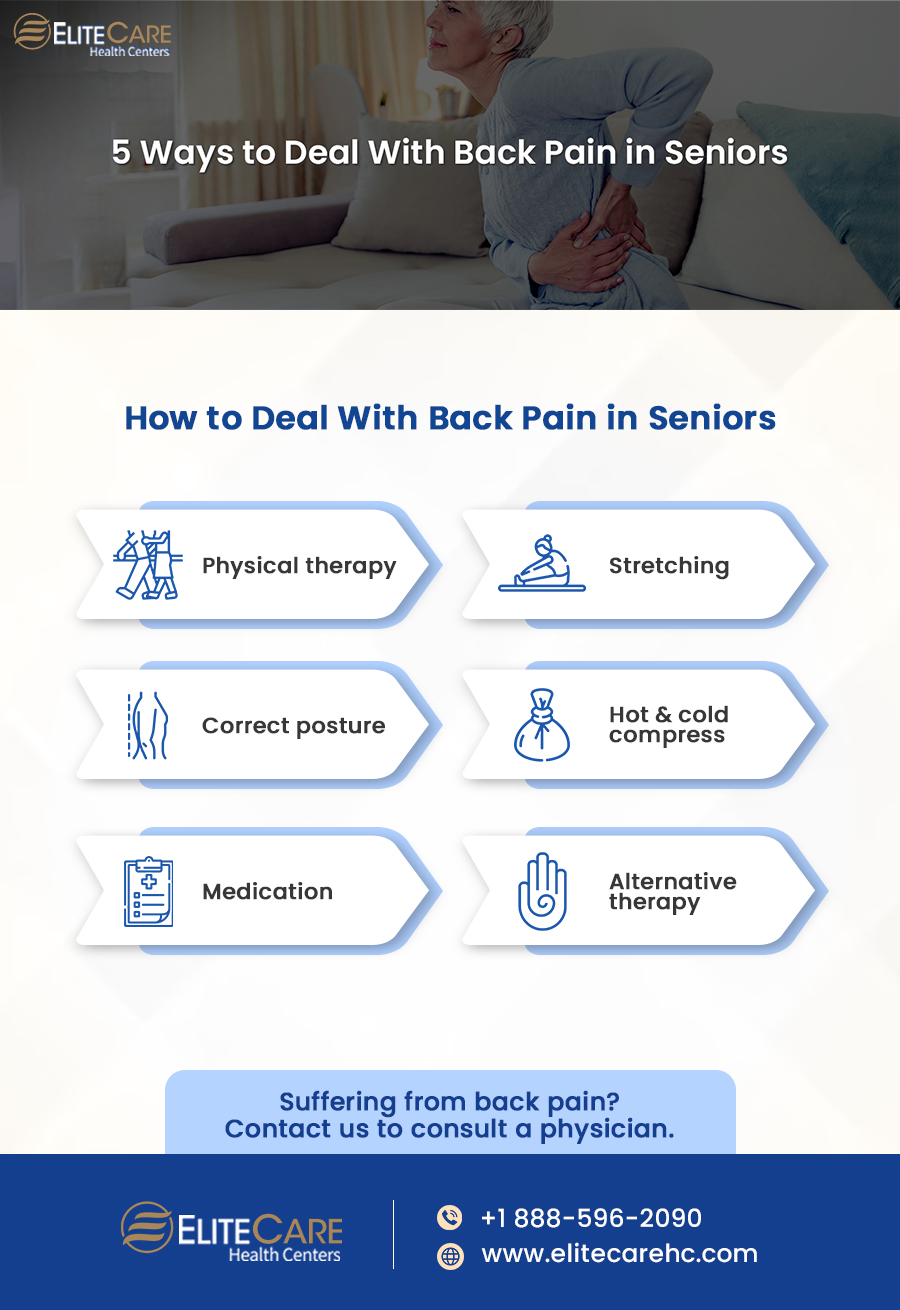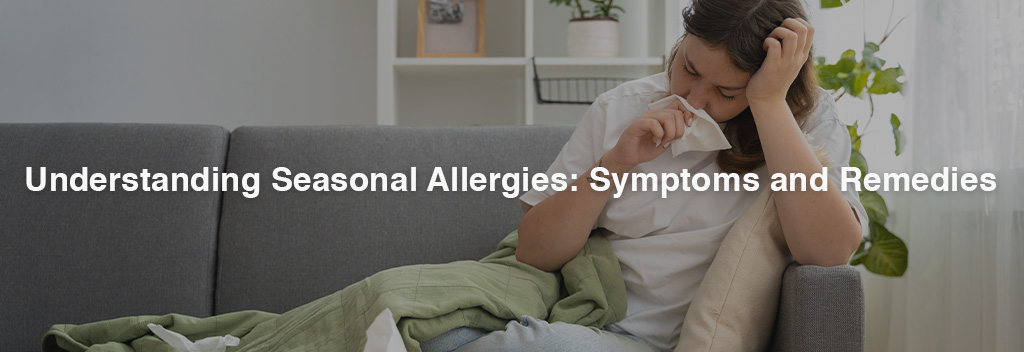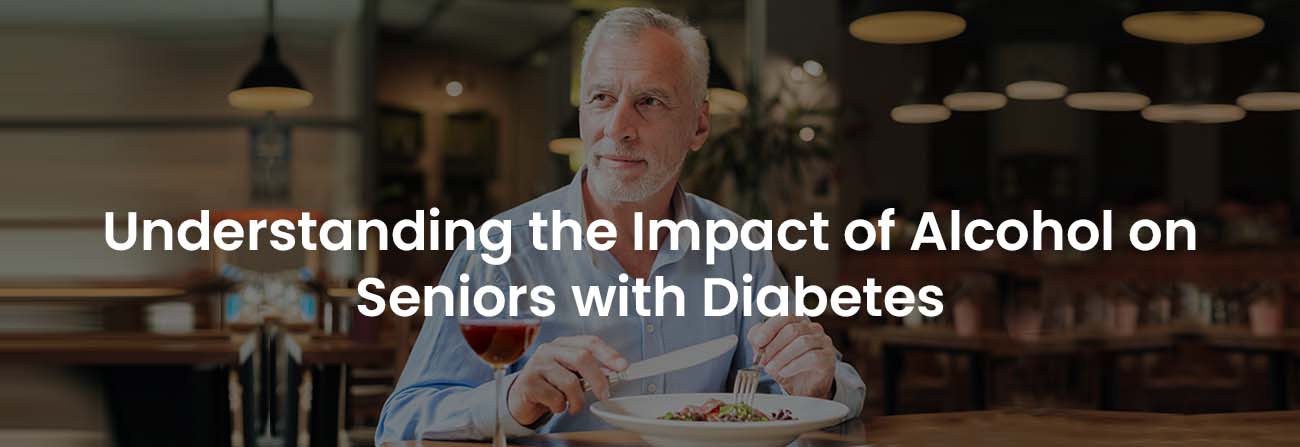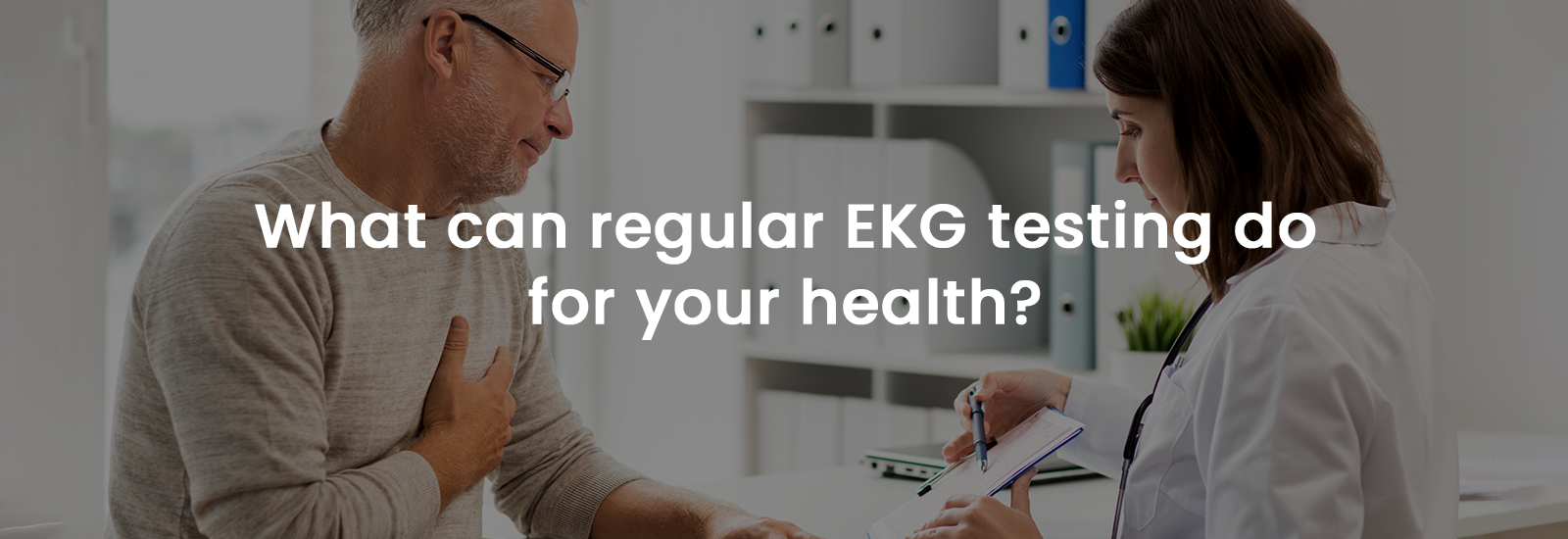
Back pain is a common condition that results in discomfort, stiffness, or pain in the back, neck, or hips. According to the National Institute of Neurological Disorders and Stroke*, back pain is a common problem among elderly individuals in the United States. Studies have estimated that about 80% of people experience back pain at some point in their lives.
Common Causes of Back Pain
A variety of factors, including injury, aging, improper posture, etc., can cause back pain in seniors. The common causes of back pain can be divided into two broad categories: mechanical and non-mechanical.
1. Mechanical Causes of Back Pain
Muscle strains
Overuse, sudden movements, or injury can strain the muscles and ligaments supporting the spinal cord. In the long run, it can lead to back pain and discomfort.
Bulging discs
Spinal discs are rubbery pads located between the vertebrae or individual bones that make up the spinal column. These discs can become damaged with age, leading to bulging or herniated discs. It can create pressure on nearby nerves, therefore, resulting in back pain.
Osteoarthritis
This is a common type of arthritis caused by age-related degeneration of joint cartilage and the underlying bones. Osteoarthritis can make the joints in the spine stiff and lead to chronic back pain.
Spinal stenosis
With this condition, the spinal canal becomes narrow and creates pressure on the spinal cord and nerves. It can not only lead to back pain but can also cause leg pain.
Sacroiliac joint dysfunction
The sacroiliac joints connect the spine to the pelvis, and when they become painful and stiff, it is known as sacroiliac joint dysfunction. It can lead to back pain, especially in the lower back.
2. Non-Mechanical Causes of Back Pain
Poor posture
Sitting or performing activities in improper posture for extended periods can put stress on the spine and lead to back pain.
Poor lifting technique
Improperly lifting heavy objects can put stress on the back and lead to a back injury.
Stress
Emotional tension plays a vital role in causing muscle tension, which can eventually lead to back pain over time.
Obesity
Excessive weight can put additional stress on the spine and cause back pain.
Do not self-medicate and consult a doctor immediately for proper diagnosis and treatment.
How to Deal with Back Pain in Seniors
Doctors recommend the most effective course of treatment for back pain depending on the underlying cause of the pain and the severity of the symptoms. In addition to prescribed medicines, these few simple ways can help manage the pain.
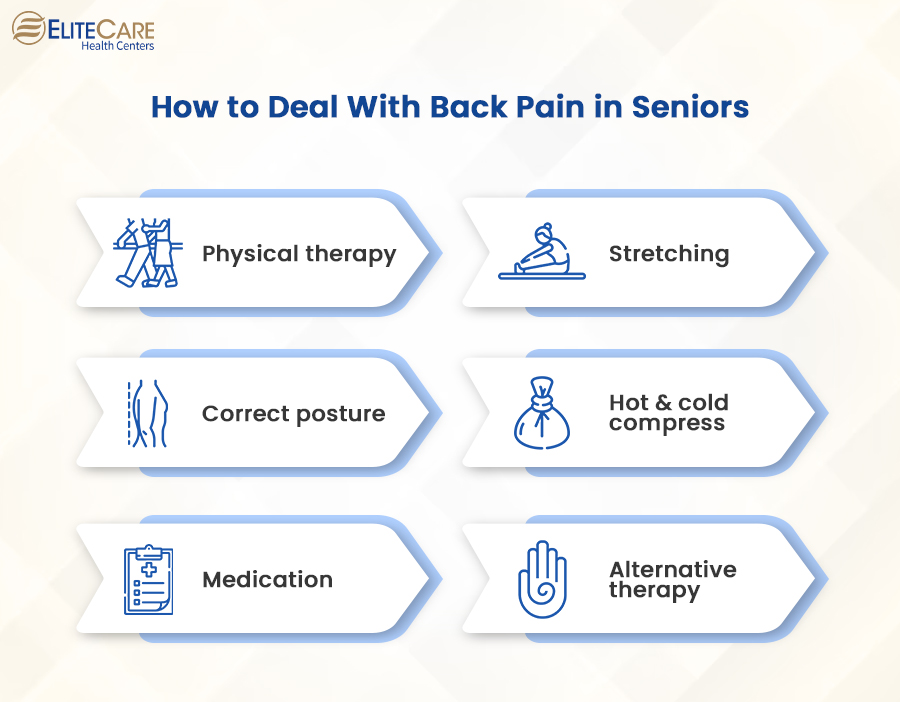
1. Physical therapy
Physical therapy can help strengthen the muscles supporting the spine, improve posture, and reduce the severity of the pain. It can also help relieve pain by improving blood flow to the affected area, reducing inflammation, and promoting tissue regeneration.
Always consult a primary care physician before opting for physical therapy as it may worsen the pain in some cases. Also, consult a physical therapist who can help design a personalized program to alleviate back pain.
2. Stretching
Among all forms of exercise that can help relieve back pain, stretching is the most effective of all. It relieves muscle tension, improves flexibility, and promotes circulation. Besides, it can also help alleviate stress, which can be a contributing factor to back pain.
Here are some easy back stretches for pain that seniors can practice:
- Knee-to-chest stretch: Seniors can lie on their backs with their legs straight and feet flat on the floor. Then, they have to bring one knee up towards their chest and use their hands to gently pull it closer. Try to hold the stretch for at least 30 seconds, and then switch legs and repeat.
- Seated spinal twist: Seniors can sit tall on the edge of a chair with their feet flat on the floor. Place the right hand on the outside of the left knee and slowly twist the upper body to the left. Try to hold this position for at least 30 seconds, and then switch sides and repeat.
- Cat-cow stretch: Individuals can begin in a tabletop position on their hands and knees. With an inhale, arch the back while looking up towards the ceiling. While exhaling, round the back, tuck the chin into the chest, and repeat this at least ten times.
- Standing hamstring stretch: Stand tall and place the left foot on a raised surface, such as a chair or a step. Keep the right foot flat on the floor, bend the left knee, and slowly lean the torso forward. Hold the stretch for at least 30 seconds, and then switch sides.
Always consult a doctor or professional trainer before starting any new exercise regime, as some stretches may not be appropriate for some conditions or injuries. A trained professional will also teach proper techniques and help seniors determine which stretches are most appropriate for their specific needs.
3. Correct posture
Poor posture not only leads to back pain, but also can result in spondylitis, and headaches. Improving posture can reduce muscle tension, maintain proper body alignment and promote better circulation. Seniors can maintain good posture with the following instructions.
- While walking, try to maintain a straight and tall posture and keep the shoulders relaxed, and the chest out.
- When sitting, seniors must keep their feet flat on the floor and their knees slightly higher than their hips.
- Place lumbar support in the curve of the lower back, if required.
- If an elderly person uses a computer, set up the monitor, keyboard, and mouse at a comfortable height to reduce strain on the neck and shoulders.
- Take frequent breaks from prolonged sitting or standing and stretch or move the body.
4. Hot and cold compress
Applying a hot or cold compress, or alternating between the two, can help reduce inflammation and improve the circulation of blood and lymphatic fluid in the affected area. Thus, easing any soreness and providing relief from pain.
Start with a cold compress, such as an ice pack, and follow it with a hot compress, such as a heating pad or a hot water bottle. Each compress should be applied to the affected area for 10 to 20 minutes at a time, and three to four times a day.
5. Medication
Non-steroidal anti-inflammatory drugs or NSAIDs are the most frequently used pain medications for back pain. NSAIDs such as ibuprofen (Advil, Motrin IB) and naproxen (Aleve, Naprosyn) help reduce inflammation and relieve pain in the joints, muscles, and tissues. Seniors can take these medications orally or apply them topically as per a healthcare provider’s recommendations.
In addition to NSAIDs, some muscle relaxants can also help reduce muscle tension and spasms, often accompanying back pain. Some of the most used muscle relaxants include cyclobenzaprine (Flexeril, Amrix) and methocarbamol (Robaxin). Besides, there are some prescription medications such as opioids and anticonvulsants, often recommended by primary care physicians to treat severe cases of back pain.
The dose, as well as the effectiveness of medications for back pain, varies for every individual depending on the severity of pain. It is crucial to talk to a provider to determine the most appropriate course of treatment for seniors.
6. Alternative therapy
Sometimes, doctors recommend alternative therapies, such as acupuncture, chiropractic, and massage therapy in addition to prescribed medicines to relieve back pain. These are complementary methods that work by addressing the underlying cause of the pain and promoting healing. The following are some ways in which these therapies can help with back pain:
- Acupuncture is an age-old technique that involves the insertion of thin needles into specific points on the body to stimulate healing and relieve pain.
- Massage therapy helps with relieving muscle tension, improving circulation, and reducing pain.
- Chiropractic care involves manual adjustments to the spine only under expert supervision in order to improve alignment and reduce pain.
- Yoga is an ancient form of exercise that helps alleviate back pain by promoting flexibility, strength, and stress relief.
- Tai Chi is a gentle form of exercise that involves slow, flowing movements, and it helps improve balance, flexibility, and circulation, which can be beneficial for those with back pain.
Always consult with a primary care physician or healthcare provider before starting an alternative therapy program as some therapies may not be appropriate for some seniors due to their unique conditions or injuries.
Conclusion
Back pain is a common and debilitating issue that can negatively affect the quality of life of seniors. However, there are a number of ways in which they can manage and alleviate this pain. Acknowledge any visible symptoms and consult a provider at the earliest to prevent the pain from aggravating. For any concerns related to back pain, contact EliteCare Health Centers, one of the best healthcare centers in Florida, and schedule an appointment with our board-certified primary care physicians.
